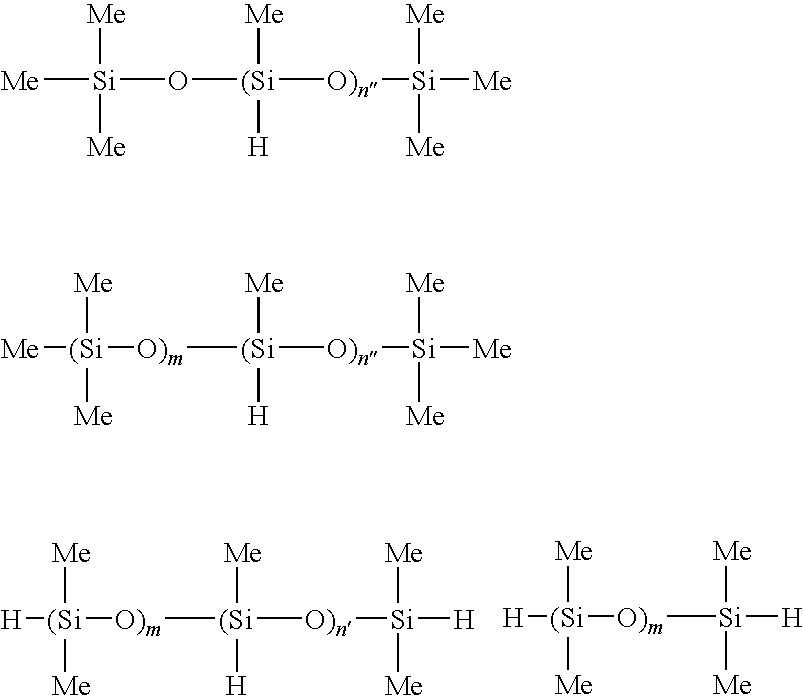Silicone emulsion composition and wood treatment
a technology of emulsion composition and composition, applied in the field of emulsion composition, can solve the problems of affecting and affecting the quality of wood, so as to reduce the leachability of water, prevent the effect of absorbing water, and improve the effect of wood interior protection
- Summary
- Abstract
- Description
- Claims
- Application Information
AI Technical Summary
Benefits of technology
Problems solved by technology
Method used
Image
Examples
preparation example 1
[0048]A 2-L polyethylene vessel was charged with 600 g of an SiH-containing organopolysiloxane of the formula:
[0049]
as component (A) and 15 g of polyoxyethylene (7) decyl ether as component (B). While the contents were agitated by a homomixer, 385 g of deionized water was slowly added. The mixture was worked on a homogenizer at 30 MPa. Then 0.1 g of acetic acid was added for pH adjustment, obtaining silicone emulsion E-1.
preparation example 2
[0050]A 2-L polyethylene vessel was charged with 600 g of an SiH-containing organopolysiloxane of the formula:
[0051]
as component (A) and 15 g of polyoxyethylene (7) decyl ether as component (B). While the contents were agitated by a homomixer, 360 g of deionized water was slowly added. The mixture was worked on a homogenizer at 30 MPa. Then 0.1 g of acetic acid was added for pH adjustment, obtaining silicone emulsion E-2.
preparation example 3
[0052]A borate (Na2B8O13.4H2O) available as Tim-bor® from U.S. Borax Inc., 15 g, was combined with and dissolved in 85 g of deionized water, forming a 15% aqueous solution of the borate as component (D).
PUM
| Property | Measurement | Unit |
|---|---|---|
| mol % | aaaaa | aaaaa |
| time | aaaaa | aaaaa |
| time | aaaaa | aaaaa |
Abstract
Description
Claims
Application Information
 Login to View More
Login to View More - R&D
- Intellectual Property
- Life Sciences
- Materials
- Tech Scout
- Unparalleled Data Quality
- Higher Quality Content
- 60% Fewer Hallucinations
Browse by: Latest US Patents, China's latest patents, Technical Efficacy Thesaurus, Application Domain, Technology Topic, Popular Technical Reports.
© 2025 PatSnap. All rights reserved.Legal|Privacy policy|Modern Slavery Act Transparency Statement|Sitemap|About US| Contact US: help@patsnap.com



